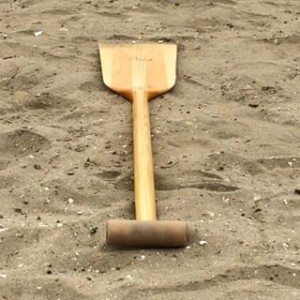
So you have read Efficient Dragon Boat Paddling Part 1?
What more can we add?
You will discover from these blogs that visualisations are important.

Imagine your dragon boat has wheels and that your paddle will be catching in sand, not water.
You have a full crew and your task is to paddle the boat forward.
Obviously you will ensure the paddle is buried in the sand before you pull.
DISTINCT CATCH.
Now the pull back required to get the boat to move is going to be hard so you will engage your legs, with your body forming a stable frame. You will drive with your legs and pull with your shoulders.
SOLID DRIVE.
As the boat moves towards your buried paddle, you will apply a downward force with your top hand to ensure the paddle doesn’t move sand instead or pop out.
Once the paddle reaches mid-thigh or hip, you will imagine that it is very difficult to get enough leverage to put any power into the paddle. So you might as well exit, return quickly and plant the paddle in for the next stroke.
CLEAN EXIT WITH A QUICK RETURN
Interestingly, when I first tried this, I found that what I set my body up to do in the visualisation did not match what I did in a normal dragon boat.
I didn’t catch as purposefully as I would in sand. I didn’t drive as consciously with my legs as I would in sand. I didn’t keep downward pressure on the top hand. And I didn’t exit as early as I did in my sand visualisation.
Yet, if you look at it closely, the sand visualisation is pretty much on the money when it comes to a pretty useful dragon boat stroke:
- Proper catch
- Powerful drive through the legs with a stable body and using the bigger muscles.
- Downward pressure on the top hand to ensure we stay in dense water. Remember from Part 1 – Try not to move the water.
- Finish the stroke when all the levers (arms, legs, hips) in your body have passed their optimal angles.
Next time you are in a dragon boat, do the sand visualisation. Did you change your stroke in any way? Did you notice anything different in your body? More leg engagement? Did your hips move at all? A deeper stroke? A quieter stroke (no moving water)? A micro pause to get the catch right? Try it. Then come back and tell us how it went.
